1948 BONNEVILLE TANK BELLY RACER
1948 Other Makes BELLY TANK RACER for sale in Houston, Texas, United States
| Condition: | Used |
| Item location: | Houston, Texas, United States |
| Make: | Other Makes |
| Model: | BELLY TANK RACER |
| Type: | ORIGINAL U.S. GOVT. BOMBER TANK |
| Year: | 1948 |
| Mileage: | 9,999 |
| VIN: | 9999999999 |
| Color: | RAW ALUMINUM |
| Engine size: | no engine |
| Interior color: | BROWN |
| Vehicle Title: | Rebuilt, Rebuildable & Reconstructed |
| Want to buy? | Contact seller! |
Description for Other Makes BELLY TANK RACER 1948
CONSTRUCTED WITH AUTHENTIC U.S. GOVERNMENT WWII AIRCRAFT SURPLUS EQUIPMENT1 9 4 8 B O N N E V I L L E S A L T F L A T S TANK BELLY RACER MOCK UP (No Engine or Transmission)
I CAN FULLY ARRANGE FOR THE SHIPPING OF THIS VEHICLE EXPEDITIOUSLY AND INEXPENSIVELY
Those in"the know"realize theR A R I T Y, istorical significance and uniquely American automotive conception of the highly covetedBonneville Salt Flat Tank Belly Racersof the 1930's-40's and that finding one for under $75,000 would indeed be a rare offer. But before you hit theBUY IT NOWI must stress that while this fabulously authentic Belly Tank Racer was constructed from an original 330 gallon U.S. Government SurplusWWII Corsair Fighter Jetauxiliary fuel tank and other authentic WWII aircraft parts, his "Racer" was constructed within the past decade as a "mockup" which means it DOES NOT have an engine or transmission and was NOT designed or built to be driven. It is strictly an aesthetic, ery authentic lookingfull sizeWWII Tank Belly Racer built for automotive display.
This very rare and authentic build is all originalU.S. GOVERNMENT WWIIaircraft aluminum (aesthetically this build is indistinguishable from an actual 1940's Salt Flats Racer) with 1940'sPlymouthsteel axles and just under 14 feet in length and weighs about 350 pounds. There are four "lift eyes" pulled from a decommissioned WII aircraft welded to the two axle shafts and are designed to cable support the "Lakester" from rafters or a ceiling and can be easily mounted as a prop in a collector car showroom.
The uses for such an authentic WWII Tank Belly Racer would be endless and an immediate crowd pleaser. Of course, f the new owner decided to "open" the body and mount a "frozen" antiquated, eriod correct (post war) car motor then this would absolutely complete the Racer as an impressive static display, nd it would be virtually indistinguishable from an actual $75,000-$100,000 WWII Tank Belly Bonneville Salt Flats Racer.
The mock up rolls (and steers) and has an actual 1930's WWII working airplane "yoke" aircraft steering wheel and guages, ut was not designed to be raced or driven. Of course, f you have the engineering skill sets and ambition anything's possible, ut as is, he is a very unusual and commanding static vintage automotive display.
YOU ABSOLUTELY WON'T BE FINDING ANOTHER ONE OF THESE AT THIS PRICE. $6900 buy it now.
THE TANK BELLY RACER IS LOCATED INHOUSTON,TEXAS AND WILL BE SHIPPED FROM HOUSTON, EXAS
BELOW YOU WILL FIND SOME HISTORY AND HISTORICAL PHOTOS OF THE TANK BELLY RACERS
| Sold for $440,000 at2007 Gooding & Company. |
Tom Beatty was a dry lakes racer, ho later became a speed shop owner. There were a number of speed manufacturers during the 1950s producing racing cams, eads, tc. Tom worked for a number of them and honed his craft. But to make a fast car to drive on the dry lakes meant some creativity might be needed. You could build a car like some of the other Hot Rodders, r as some of the returning veterans did - modify a 'belly tank' from a jet fighter. As crazy as it may sound today, he P-51 Mustang fighter planes were fitted with a large aluminum belly fuel tank. The designs were very, nd had to be, erodynamic and light.
Since engines could be interchangeable, elly tank racers could participate in a number of classes. One of the more legendary belly-tank racers was, f course, om Beatty. Tom and his good friend and noted racer Barney Navarro fitted his car with a supercharged Ford Flathead V8. They went to Bonneville in 1951 and running in the D-Lakester class went 188 mph. That was the fastest an open wheel car ran to that date. That notoriety brought Tom some fame and also sponsorships. In 1953 Tom ran 203 mph and ultimately ran almost 240 in the late 1950s. The car was retired in the 1960s and later restored back to its original condition. It is currently on display at the Henry Ford Museum.
| Sold for $440,000 at2007 Gooding & Company. |
His first attempt with the belly tank was the smaller 165-gallon version mounted on a simple frame. The engine was positioned in front of the driver; the container proved too small to contain the engine and retain its aerodynamic form. So a larger version was used, his time mounting a Ford flathead V8 engine behind the driver. All components, ncluding the cockpit, ere fully enclosed to maximize aerodynamic efficiency.
It was not long before other hot rodders and speed equipment manufacturers were modifying surplus drop tanks and achieving 200+ mph in speed trials. The list of legendary tuners includes Alex Xydias - So-Cal Speed Shop founder, acers Bob McClure, ay Brown and Tom Beatty, nd speed equipment manufacturers Earl Evans and Howard Johansen.
The designs were perfected throughout the years and every attempt was made to reduce the vehicle's overall weight. Most did not have any creature-comforts afforded to the driver, ngine cooling devices, r even brakes. The designs were simple yet effective and very functional. Engines were easily changeable so the belly-racers could compete in a variety of classes dictated by their displacement size.
One of the most legendary belly-tank racers was the Tom Beatty Lakester. Tom Beatty, lakes racer, ater became a speed-equipment manufacturer. Together with speed merchant Barney Navarro, he Lakester utilized a forced-induction setup. This configuration was not as popular as nitro-methane among racers, et would prove its potential in the Lakester. Beatty and Navarro fitted the Lakester with a GMC-371 supercharger, our Stromberg 48 carburetors, d a flathead V8 engine.
The results were positive but additional work was required to improve upon the vehicles aerodynamics. Near the close of the 1951 season, eatty created a new lakester based on a P-38 Lightning drop tank. The chassis was created from 3/4-inch diameter chrome-moly steel tubing resulting in a rigid truss-type platform. The rear suspension was independent with ford-based swing axles. The front setup used a Ford Model A axle turned upside and mounted a transverse leaf spring directly behind it to reduce wind resistance.
Typical belly racers of the era used an in-out gearbox; the Lakester used an unconventional modified transmission with second and high gears used for acceleration.
The Lakester was brought to the 1951 Bonneville Nationals where it was painted in black with 'Auto Accessories Co.' prominently displayed on the side. With its 296 cubic-inch Mercury flathead engine and supercharger fueled by alcohol, he belly-racer ran in the D Lakester class.
The first run in the newly created Beatty Lakester achieved 188.284 mph; its inaugural journey had resulted in the 'fastest open-wheeled car' to that date.
The success earned Beatty sponsorship by Belond. When it returned to Bonneville with was paintd red and white and dubbed the 'Belond Equa-Flow Special.' Improvements included a Frank Kurtis built streamlined aluminum headrest fairing. The engine retained the 3-71 Supercharger and gained V-belts. The engine had plenty of connecting-rod failures; to resolve this issue, he rods were 'boxed' by welding on side plates.
Beatty went through his share of engines. He ran boost pressures as high as 15:1 and pushed the engines to their limits. When the engines managed to hold together, t often resulted in new records or fastest times of the day. Over a consecutive five year period, is flathead-powered belly-tank racer set SCTA's 'Top Speed of the Season', rom 1951 to 1955, nd again in 1959.
In 1952 Beatty ran 203.61 mph one way. The following years were met with impressive results, hough in 1954 the belly racer was plagued by four successive engine failures. In 1955, etty was sponsored by Weiand Speed Equipment and the belly-tanker was painted to reflect that sponsorship, n a Weiand Yellow paint scheme. During that year, e official became part of the 200 mph Club after having an average two-way run of 211.267 mph. The following year, e ran 211.888 mph and in 1957 a speed of 209.180 was ascertained. His records in the C Lakester category have not been broken.
In 1958, eatty opened the Tom Beatty Automotive Engineering shop in Sun Valley, alifornia. By this point, he flathead V8 engine popularity were beginning to fade as overhead valve V8s grew in popularity. Beatty joined the band-wagon, witching to Oldsmobile power and mated to a Ford transmission. A GMC blower 6-71 was attached, itted to a Beatty-built blower manifold, nd a new blower drive. The engine originally displaced 303 cubic-inches but was later de-stroked to 260 cid for higher revs. The Lakester was painted in two-shades of blue and proudly bore the label 'Tom Beatty Automotive Engineering.' In this configuration Beatty achieved a new Bonneville D Lakester record of 232.98 mph. The following year it reached 239.38 mph.
In the early 1960s, he tubular chassis was extended by 14-inches to accommodate a Halibrand Quick-change rear end and an Olds Hydra-Matic transmission. This setup allowed him to start without the assistance of a push-vehicle. In 1962, eatty reached a record-setting average of 243.438 mph. The following year, he old belly-tank racer reached 252 mph one-way, ut was unable to duplicate that speed on the second run.
The tanker was retired in the mid-1960s and sat in a corner of his shop until it was sold in 1985 to Tom Gerardi. Gerardi removed the engine and sold the tank. It would pass to another owner before coming into the care of Dave Simard, he present owner. While in the care of Simard, he original parts, ncluding the original blown Olds V8, ere gathered and put back into the belly of the tanker. It is currently configured in the condition as it last ran at Bonneville.
IN 2007, he belly-tank Lakester was offered for sale at the Gooding & Company auction held in Pebble Beach, A. It was estimated to sell for $450,000 - $600,000. It is a very successful land-speed racer that achieved a Record on its inaugural debut. It was the Fastest SCTA Lakes Racer of the Season from 1951 to 1955, nd again in 1959. It set records at Bonneville in 1951, 952, 955, 956, 957, 958, 959, nd 1962. It is the Fastest Belly-Tank Lakester ever created, aving achieved a two-way run of 243.438 mph.
This aerodynamic WWII-surplus tanker is a big piece of history; being offered for sale at auction represented a rare opportunity and thus, he half-million dollar estimate was appropriate. As the gavel fell for the third and final time, he lot had been sold. The estimates had not been achieved, et a high bid of $440,000 including buyer's premium, as enough to sell the lot.
How about some Belly Tanks History
Hot rods are such an integral part of American post-war culture that it's very difficult to imagine that there was a time when they didn't exist. There was an era when the people who were into hot rodding were a relatively small group of vanguards, inding out what made their cars faster simply by trial and error.
Necessity bred homegrown ingenuity as these early rodders sought to improve performance within the constraints of their limited finances and resources. If they couldn't afford something, hey'd try to make it. They were figuring it all out as they went along--experimenting and improvising with whatever used parts they could get their hands on. The route was to be determined by their creative ability, ut the destination was always clear and simple--to go faster.
Of course, ccustomed to making the most out of what little they could get their hands on, ne hot rodder figured out a way to make a streamliner dry lake racer at scrap yard prices.
Bill Burke had raced a '32 Ford roadster on the dry lakes of Southern California in the 1930s and early '40s and still had racing on his mind when he headed to the Pacific to serve as a PT boat pilot during W.W.II. While in Guadalcanal, e noticed some teardrop-shaped P-51 Mustang fighter plane belly fuel tanks being unloaded from a freighter. Instantly impressed by their aerodynamic design, e got close enough to measure one of them. Knowing the dimensions of a Ford rear end and an engine block off the top of his head, e was sure it was feasible to use one of these tanks to make a dry lake racer.
After the war, urke returned to Southern California and picked up his hot rodding pursuits where he had left off. While looking for car parts, e found that airplane belly tanks were plentiful in surplus yards. They could be bought for about $35 a piece--just a fraction of the cost of designing and building a streamliner body from scratch. The U.S. government and aircraft engineers had spent a lot of time and money designing these tanks to be lightweight and optimally aerodynamic at very high speeds. Now all of Uncle Sam's wartime engineering efforts were going to pay dividends to hot rodders.
Burke's first belly tank lakester was made from a 165 gallon P-51 Mustang tank, ust like the ones he'd seen during the war. Burke ran the car in 1946, eaching a speed of 131.96 mph, owered by a Mercury V-8. The next year, urke returned with a car made from the wing tank of a P-38 Lightning. At 315 gallons, he P-38 tank was much larger than the P-51 tank. He placed the driver in the front and the engine in the rear. This time, verything fit inside the tank except for the wheels and a small windshield for the driver.
Alex Xydias, he owner of the So-Cal Speed Shop, ielded one of the most well-known and successful tank racers.
Xydias' So-Cal Special was set up more or less like Burke's tank, xcept that it had a bubble canopy and was powered by a 156 cubic inch flathead V-8 and the rails were custom-built. At Bonneville in 1951, he So-Cal team set a new record for their class, unning a 145.395 mph average.
The So-Cal Speed Shop team took the car back to their motel and--right there in the parking lot--swapped the engine out. They put in a larger, 59 cubic inch Mercury flathead and ran the car again in a larger engine class. They set a record in that class as well, unning 181.085 mph.
Here's Walt's Belly Tank jet car. He set a record for a few minutes, hen his brother took it away, nd they didn't speak for decades.
The team then swapped the engine out once again, his time putting in a 296 cubic inch Mercury engine. It ran a one-way time of 198.340 mph, ith a two-way time of 195.77 mph. This speed was a record for its class, ntil it was upstaged the next day by the Mal Hoopster lakester, hich was running with a Chrysler hemi and turned a 197.88 mph average. But the Special's 198.340 mph run is still the fastest one-way speed that a non-blown flathead has ever run.
To put all of these achievements into perspective, onsider that at 1952's Indy 500, roy Ruttman (with all of his sponsors and his overhead cam engine) won the Indy 500 with an average speed of only 128.922. Xydias was going faster than Ruttman in a salvage yard belly tank powered by a pre-W.W. II flathead Ford and no sponsors.- See more at: http://www.bikernet.com/pages/5Ball_Racing_2014_Part_Ithe_Concept.aspx#sthash.OiYSPQsJ.dpuf
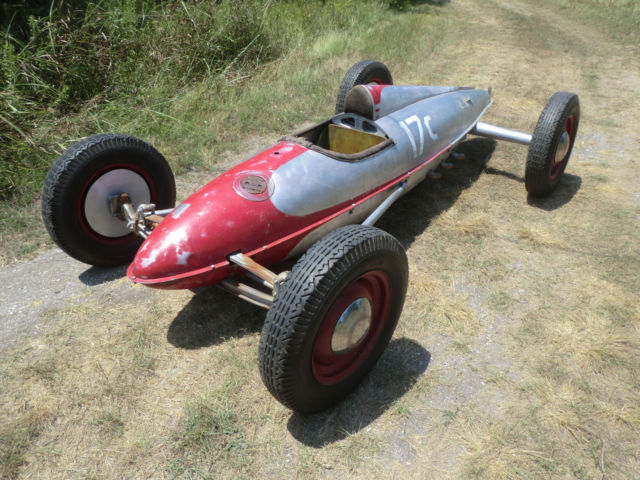
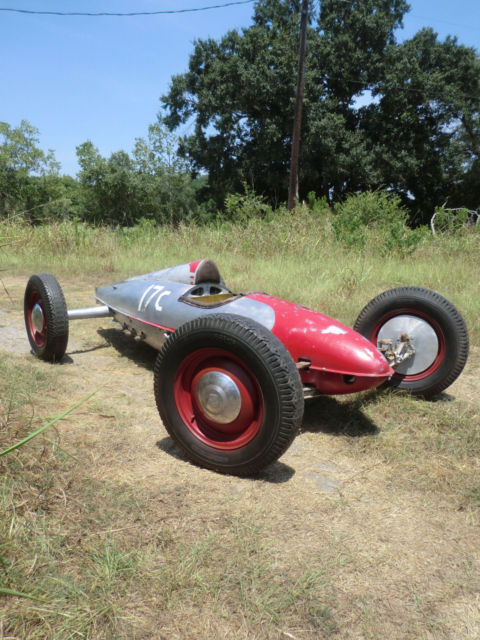

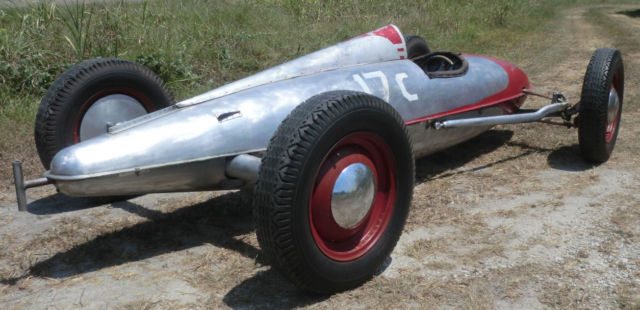
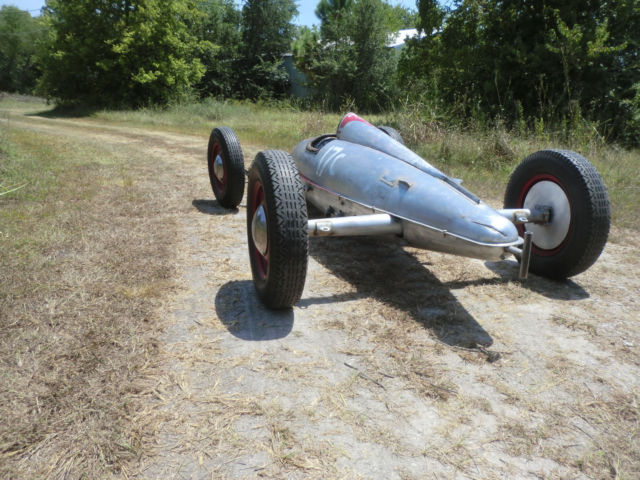
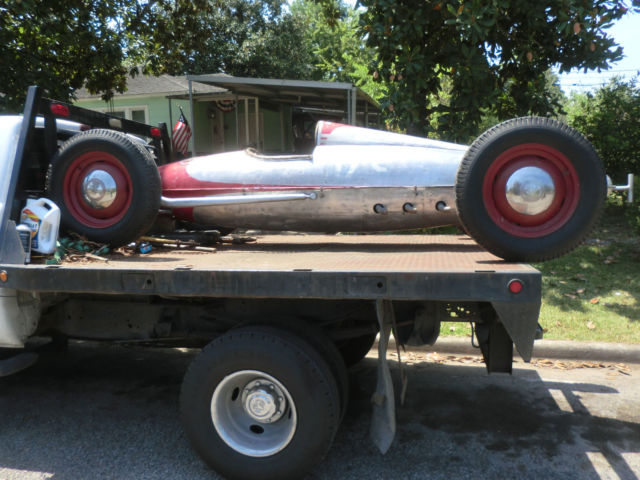
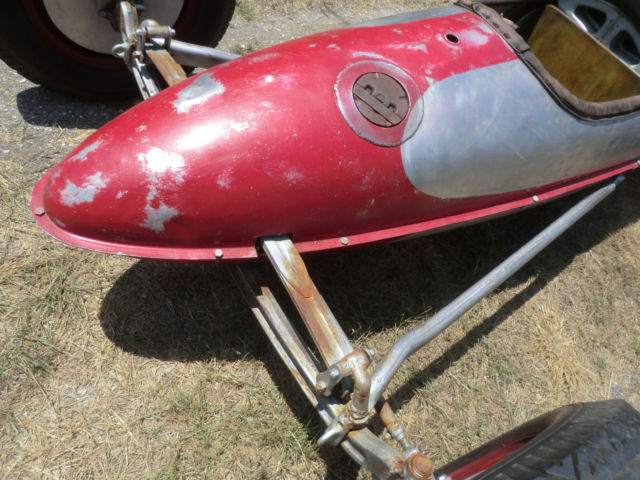

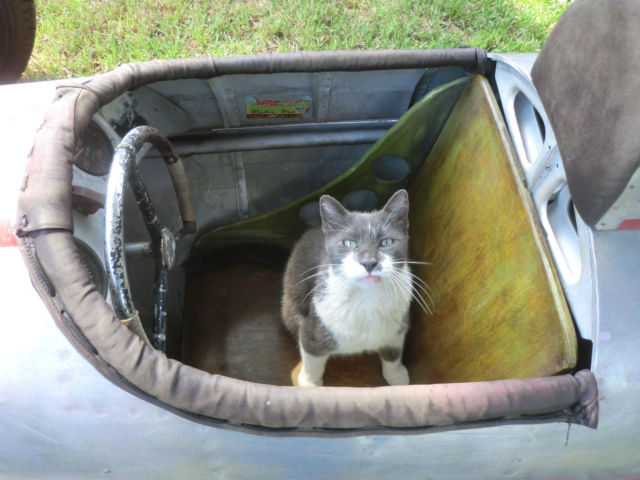
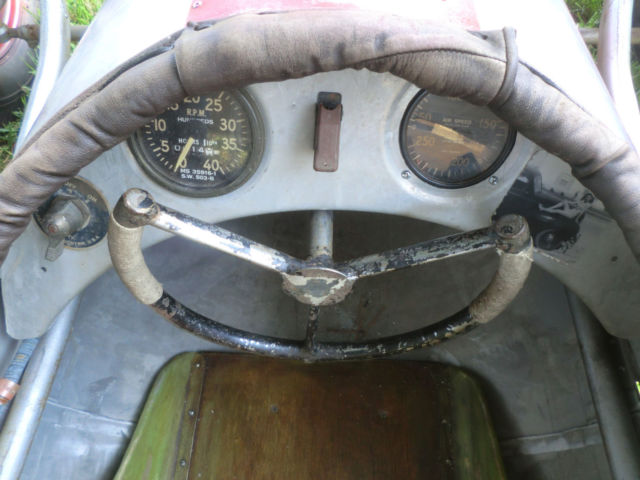
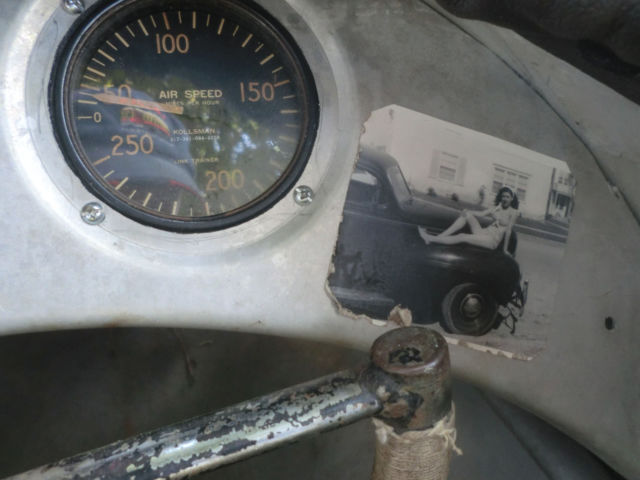

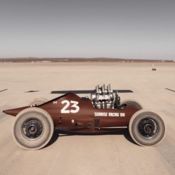 Belly Tank Racer SCTA Landspeed TROG 1932 Hot Rod
Belly Tank Racer SCTA Landspeed TROG 1932 Hot Rod
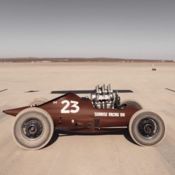 Belly Tank Racer SCTA Rare Landspeed TROG 1932 Hot Rod
Belly Tank Racer SCTA Rare Landspeed TROG 1932 Hot Rod
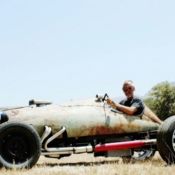 WW2 P-47 THUNDERBOLT BELLY TANK STREET ROD DRY LAKE BARN FIND
WW2 P-47 THUNDERBOLT BELLY TANK STREET ROD DRY LAKE BARN FIND
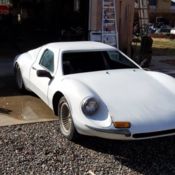 sports car kit road racer
sports car kit road racer
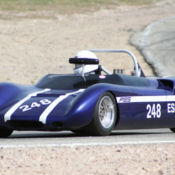 1967 PBS MK4 Sports Racer
1967 PBS MK4 Sports Racer
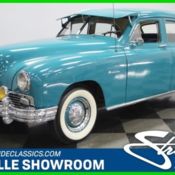 1948 Frazer Manhattan Sedan 1948 Used Manual
1948 Frazer Manhattan Sedan 1948 Used Manual
 1928 CHEVROLET INDIANAPOLIS MONOPOSTO RACER
1928 CHEVROLET INDIANAPOLIS MONOPOSTO RACER